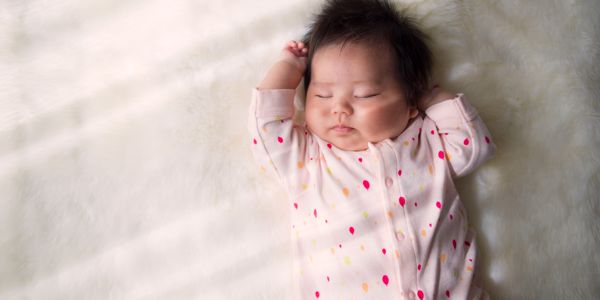The topic of bedsharing often evokes strong opinions among parents and healthcare professionals alike. As parents navigate the exhausting world of infant sleep, many find themselves grappling with the decision of whether or not to bedshare. Despite the recommendations from the American Academy of Pediatrics (AAP) advising against bedsharing, it remains a common practice in many households. Understanding the nuances of bedsharing, cosleeping, and room sharing, as well as the associated risks and safety precautions, is essential for parents who want to make informed decisions that prioritize their baby’s safety.
Defining Bedsharing, Cosleeping, and Room Sharing
Before delving into safety recommendations, it's important to clarify the distinctions between bedsharing, cosleeping, and room sharing:
- Bedsharing refers to the practice of parents and infants sleeping together in the same bed. This is often done to facilitate breastfeeding and to keep the baby close for comfort and monitoring.
- Cosleeping is a broader term that encompasses any arrangement where the baby sleeps in close proximity to the parents. This can include bedsharing, but it can also refer to arrangements like using a sidecar crib that attaches to the parents' bed or simply sharing a room but separate sleep space (like a bassinet, crib, or pack and play).
- Room Sharing involves placing the baby in a separate sleep space, such as a crib or bassinet, within the same room as the parents. The AAP recommends room sharing for at least the first six months of a baby’s life as the safest option to reduce the risk of Sudden Infant Death Syndrome (SIDS).
AAP Recommendations and the Reality of Bedsharing
The AAP's guidelines on safe sleep strongly advise against bedsharing, citing concerns about the increased risk of SIDS, accidental suffocation, and other sleep-related infant deaths. The organization advocates for room sharing without bedsharing as the safest sleep environment for infants, emphasizing that babies should sleep on their backs on a firm, flat surface free of soft bedding, pillows, and toys.
However, despite these guidelines, studies show that bedsharing is still a common practice among many families. Factors such as cultural norms, breastfeeding convenience, and the desire to soothe a fussy baby often lead parents to bring their babies into bed with them. Additionally, exhausted parents may find themselves unintentionally bedsharing after falling asleep while feeding or comforting their baby. In recognition of these realities, some experts argue that providing education on how to bedshare as safely as possible may be more effective than an abstinence-only approach, which might not address the needs and behaviors of all families.
Minimizing Risks: Guidelines for Safer Bedsharing
While no amount of precaution can completely eliminate the risks associated with bedsharing, there are steps parents can take to reduce the likelihood of accidents. If parents choose to or find themselves bedsharing, it's crucial to follow these safety guidelines:
- Create a Safe Sleep Environment: Ensure that the mattress is firm and flat. Avoid soft surfaces like couches, armchairs, or waterbeds, which increase the risk of suffocation. The bed should be free of pillows, heavy blankets, and soft bedding that could cover the baby’s face or cause overheating.
- Positioning: The baby should be placed on their back to sleep, just as in a crib. Keep the baby close but ensure they have their own space to avoid the risk of being rolled onto by an adult.
- Avoid Gaps and Hazards: Make sure there are no gaps between the mattress and the wall or headboard where the baby could become trapped. Mattresses on the floor away from furniture or window coverings would be the safest option, though no adult mattress is approved for infant use.
- Consider the Parent’s Condition: Bedsharing should be avoided if the parent has consumed alcohol, taken sedative medications, or is extremely sleep-deprived, as these factors can impair the ability to wake up or respond to the baby.
- Breastfeeding: Research suggests that breastfeeding mothers naturally position themselves in a way that makes bedsharing safer, such as adopting a protective "C" shape around the baby. Breastfeeding also has protective effects against SIDS, making it a crucial consideration in the context of bedsharing.
- Room Sharing as an Alternative: For parents who want to keep their baby close but are concerned about the risks of bedsharing, room sharing is a recommended alternative. A bassinet or crib placed next to the parents' bed allows for proximity and ease of feeding while reducing the risks associated with bedsharing.
For a summary of this list:
What can you do to make it safer?
- Parents are non-smoking
- Parents are sober
- No siblings in the bed (or pets)
- Baby is healthy and full-term
- Baby is exclusively breastfed
- Baby stays on their back
- Baby is dressed not too warmly to prevent overheating
- Baby is not swaddled
- The bed is not too soft (not much guidance for how to measure this, however), and pillows and blankets are not near the baby (or on the bed AT ALL). If mom has long hair, keep it tied back and mom sleeps in tight pajamas (not loose clothing).
- Be sure there are no gaps between the bed and headboard, no loose fabric, cords or anything else hanging into the bed. The safest setup is to have the mattress on the floor.
The Importance of Informed Decision-Making
It’s important to acknowledge that bedsharing is not without risk, and no strategy can make it completely safe. However, given the reality that many parents do bedshare, either intentionally or unintentionally, educating them on how to do so as safely as possible is crucial. The goal is not to promote bedsharing but to provide parents with the information they need to make informed choices and to minimize risks if they do decide to share a bed with their baby. Did you know… they've seen a reduction in bedsharing deaths in New Zealand (by 30%) just by sharing bedsharing information and ways to reduce the risk?
Not everyone meets the criteria to be able to do it "safely" nor does everyone want to/need to bedshare!
At the end of the day, each family must weigh the benefits and risks in light of their unique circumstances. By understanding the difference between bedsharing, cosleeping, and room sharing, and by being informed of the AAP’s recommendations alongside practical safety measures, parents can better navigate the complex decisions surrounding their baby’s sleep.
Conclusion
Bedsharing is a deeply personal choice that many families make, often out of necessity. While it carries risks, these can be mitigated through careful planning and adherence to safety guidelines. By combining evidence-based recommendations with an understanding of real-world practices, parents can create a sleep environment that supports both their baby’s safety and their family’s well-being.








